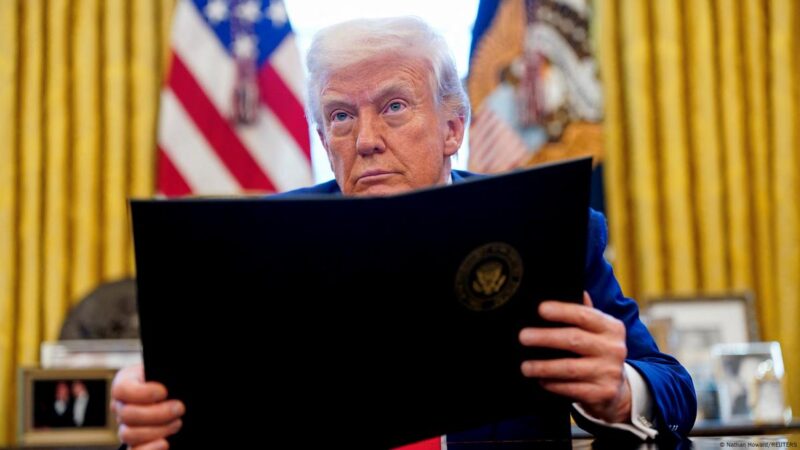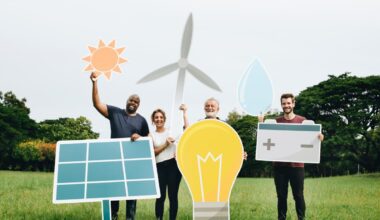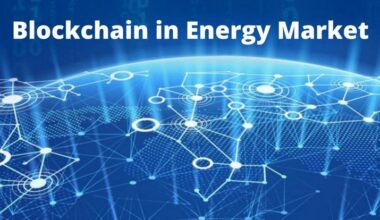Top Government Grants Supporting AI in Clean Energy Projects (2025 Guide)
Introduction
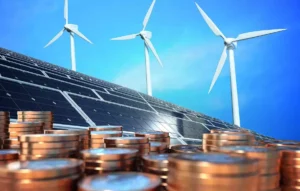
It’s no secret that clean energy solutions have become one of the fastest-growing investment sectors worldwide, driven by a global imperative to reduce carbon emissions and mitigate climate change. As solar farms, wind parks, and other renewable installations multiply, a new force is shaping these initiatives even further—artificial intelligence (AI). By combining AI with clean energy, organizations can maximize efficiency, optimize resource allocation, and drastically cut operational costs. The common question, however, is: How do you fund these capital-intensive undertakings?
Government grants have emerged as a critical source of financial support, fueling innovative projects that target green energy adoption and AI-driven optimization. Whether you’re an established business, a startup, a university lab, or a nonprofit, these grants can be your ticket to turning visionary ideas into tangible results. In this 2025 Guide, we’ll delve into the top government grants supporting the convergence of AI and clean energy, detail precisely what they fund, how to apply, and why these programs exist. By the end of this comprehensive resource, you’ll walk away with:
- Actionable insights into the latest grant offerings from major government bodies around the world.
- A step-by-step blueprint for preparing a grant application that stands out in a highly competitive pool.
- Real-world examples, case studies, and tried-and-tested best practices to avoid common pitfalls.
- Future trends and predictions to help you adapt your projects and stay ahead in the rapidly evolving clean energy arena.
- A clear call-to-action that will guide your next steps—be it further resources, consultations, or additional reading.
So, if you’re ready to unlock substantial funding, integrate next-level AI into your green initiatives, and potentially scale your impact beyond what you thought possible—keep reading. This guide is designed with one central mission: to empower you to make the world greener, smarter, and more sustainable, starting right now.
Table of Contents
- Understanding the Convergence of AI and Clean Energy
- Why Government Grants Are Crucial for AI-Driven Clean Energy Projects
- Top Government Grants in 2025
- 3.1 U.S. Department of Energy (DOE) – AI for Clean Tech Innovation
- 3.2 European Commission – Horizon Europe Green & AI Initiative
- 3.3 Canada’s NRCan Smart Energy Program
- 3.4 Australia’s ARENA AI-Enhanced Renewables Grant
- 3.5 UKRI (UK Research and Innovation) – AI for Sustainable Energy
- 3.6 Other Notable Programs
- Step-by-Step Blueprint for Securing AI-Clean Energy Grants
- 4.1 Preliminary Research and Eligibility
- 4.2 Proposal Planning and Team Formation
- 4.3 Budgeting, Milestones, and Deliverables
- 4.4 Crafting a Winning Application Narrative
- 4.5 Leverage Partnerships and External Support
- 4.6 Submission Best Practices and Follow-Up
- Case Studies and Real-Life Examples
- Common Pitfalls and How to Avoid Them
- Future Insights and Trends
- Conclusion
- FAQs
1. Understanding the Convergence of AI and Clean Energy
The alliance between artificial intelligence and clean energy is more than just a marriage of convenience. AI enables real-time predictive analytics, optimization, and automated decision-making that can drastically cut costs, reduce waste, and maximize energy harvest. For instance:
- Machine learning algorithms can forecast solar and wind output to optimize grid integration.
- Computer vision can help identify potential mechanical failures in solar panels or wind turbines before they escalate.
- Natural language processing can automatically analyze large swaths of data, from policy documents to consumer feedback, streamlining administrative tasks.
This synergy is particularly crucial in 2025. Why? Because global energy grids are rapidly integrating more renewable sources, causing demand-and-supply fluctuations that are more complex than ever. AI can spot these fluctuations early and adjust accordingly, ensuring stability and efficiency.
Key takeaway: AI is not just an add-on to clean energy solutions—it’s becoming the central nervous system of modern, sustainable power infrastructures.
2. Why Government Grants Are Crucial for AI-Driven Clean Energy Projects
Despite the undeniable benefits, developing AI-powered solutions in the clean energy space isn’t cheap. Research, prototyping, equipment, software, skilled personnel, and compliance with regulations can quickly drain budgets. This is where government grants become an invaluable lifeline:
- Risk Reduction: Grants provide non-dilutive capital, meaning you don’t give up equity in your company.
- Market Credibility: Receiving a government grant signals legitimacy to future investors, customers, and stakeholders.
- Faster Time-to-Market: Access to capital allows you to expedite R&D, testing, and deployment.
- Broader Impact: Government-backed projects often have a mandate to benefit the public, meaning your innovations have a higher chance of wide adoption and real-world influence.
- Networking Opportunities: Many grant programs offer ecosystem connections, including partnerships with universities, research labs, and private companies.
Put simply, if you want to lead in the AI + clean energy revolution, government grants can be your stepping stone to both technical success and market penetration.
3. Top Government Grants in 2025
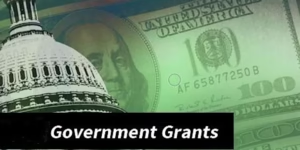
In this section, we’ll explore some of the most significant grant programs around the world that specifically support AI-focused clean energy ventures. While the details provided here are accurate as of 2025, always verify the most current information through official government websites or credible sources, as deadlines, funding brackets, and eligibility can shift over time.
3.1 U.S. Department of Energy (DOE) – AI for Clean Tech Innovation
- Funding Amount: Up to $5 million per project
- Eligible Applicants: Startups, established companies, universities, research labs, and non-profits
- Objective: Accelerate AI-driven solutions that optimize renewable energy production, storage, and grid integration
- Application Window: Annually in Q2, with additional rolling deadlines for pilot programs
The U.S. DOE has long been a pioneer in clean energy funding. This particular program aims to stimulate breakthroughs at the intersection of AI and green technologies. Projects can range from smart grid pilots to machine learning-based energy forecasting.
Why Apply:
- Access to cutting-edge research labs and data sets.
- Strong emphasis on commercial viability, offering pathways to public-private partnerships.
- Application Tip: Demonstrate how your AI approach can measurably increase grid reliability or reduce greenhouse gas emissions. Include pilot data to validate feasibility.
For more details, check out the official U.S. Department of Energy website.
3.2 European Commission – Horizon Europe Green & AI Initiative
- Funding Amount: €3–€10 million (approximately $3.5–$11 million)
- Eligible Applicants: European Union (EU) or EU-affiliated research consortia, private-public partnerships
- Objective: Drive digital innovations focusing on decarbonization and AI-driven efficiency improvements
- Application Window: Calls open in Q1 and Q3 every year
Horizon Europe is the EU’s flagship program for research and innovation. Within this broad umbrella, a special Green & AI pillar supports projects that integrate advanced analytics, machine learning, and automation into renewable energy systems. The program prioritizes transnational collaboration, meaning you’ll likely need partners in multiple EU member states.
Why Apply:
- Access to a well-structured grant ecosystem with robust project support.
- Emphasis on scalable solutions that can be deployed in multiple countries.
- Application Tip: Clearly articulate how your project aligns with the European Green Deal. Outline cross-border partnerships for maximum appeal.
Additional info can be found on the Horizon Europe portal.
3.3 Canada’s NRCan Smart Energy Program
- Funding Amount: Up to CAD 5 million (approx. $4 million)
- Eligible Applicants: Canadian organizations, with allowances for foreign collaborators in some cases
- Objective: Enhance the country’s clean energy capacity using AI for grid management, energy storage, and more
- Application Window: Rolling basis, though it’s best to check official deadlines annually
Natural Resources Canada (NRCan) offers the Smart Energy Program, which invests in technologies that promote efficiency and decarbonization. Projects using AI to optimize renewable energy, from hydro to biomass, are specifically encouraged to apply.
Why Apply:
- Well-rounded program that supports both R&D and demonstration projects.
- Opportunities for pilot deployment in remote regions.
- Application Tip: Focus on how your project can contribute to Canada’s goal of net-zero emissions by 2050. Include feasibility studies showing immediate benefits to local communities.
For the latest requirements, see Natural Resources Canada’s Funding Programs.
3.4 Australia’s ARENA AI-Enhanced Renewables Grant
- Funding Amount: AUD 1–5 million (approx. $700,000–$3.5 million)
- Eligible Applicants: Australian SMEs, research institutions, and universities with optional international collaborations
- Objective: Accelerate adoption of advanced digital solutions to boost renewable energy projects, particularly solar and wind
- Application Window: Annual calls, plus occasional special thematic rounds
The Australian Renewable Energy Agency (ARENA) focuses on innovative and scalable solutions. AI-driven renewable energy management is a prime area of interest. From remote wind farms with predictive maintenance systems to advanced solar forecasting algorithms, ARENA actively supports novel AI applications.
Why Apply:
- Access to specialized research clusters and strong government backing in green tech.
- Potential synergy with Australia’s large-scale solar and wind farms.
- Application Tip: Highlight how your AI solution addresses the specific challenges of Australia’s geographical and climatic conditions, like intense heat or remote locations.
Consult ARENA’s official website for calls and guidelines.
3.5 UKRI (UK Research and Innovation) – AI for Sustainable Energy
- Funding Amount: £1–5 million (approx. $1.3–$6.5 million)
- Eligible Applicants: UK businesses, academic institutions, and consortia; some scope for international partners
- Objective: Foster advanced AI projects that solve pressing issues in renewable energy generation, distribution, and storage
- Application Window: Typically in Q2 every year, with supplemental calls throughout
UK Research and Innovation (UKRI) invests in a wide spectrum of scientific disciplines, including cutting-edge energy research. If your AI focuses on grid reliability, wind farm optimization, or EV charging networks, this is a must-watch program.
Why Apply:
- Strong emphasis on industrial collaboration, pairing tech firms with leading universities.
- Robust peer-review and feedback cycles, improving project quality.
- Application Tip: Demonstrate not just your technological novelty but also potential commercialization paths, job creation, and environmental impact.
Visit UKRI’s Grants and Funding to learn more.
3.6 Other Notable Programs
- Japan’s AI Green Tech Initiative: Known for generous funding but competitive applications; often encourages hardware innovations alongside software.
- UAE’s Masdar AI-Driven Renewables Fund: Targets large-scale solar and wind farm digital transformations, with an emphasis on microgrid solutions in arid environments.
- Nordic Clean Energy AI Grants (via the Nordic Council of Ministers): Focuses on cross-border collaborations in wind, hydro, and geothermal, strongly supporting AI-based analytics.
4. Step-by-Step Blueprint for Securing AI-Clean Energy Grants
Winning a grant is competitive. Each year, government agencies receive thousands of proposals, many of which never see the light of day. Below is a detailed blueprint to significantly increase your chances of landing that coveted funding.
4.1 Preliminary Research and Eligibility
- Identify Relevant Grants: Scrutinize eligibility criteria—funding amounts, technology readiness levels (TRL), region, and whether you need industrial or academic partners.
- Past Awardees: Analyze previously funded projects to understand how they structured their proposals and aligned with the grant’s goals.
- Check Regulatory Requirements: Some grants have mandates around energy outputs, carbon footprint reductions, or AI explainability (especially in the EU).
4.2 Proposal Planning and Team Formation
- Multidisciplinary Approach: Combine experts in AI, renewable energy, finance, and project management.
- Role Assignments: Designate clear responsibilities. For example, a “Grant Lead” oversees writing and deadlines, an “AI Specialist” focuses on the technical approach, and so on.
- Partner Up: Government agencies often favor consortia that include industry, academia, and even non-profit organizations.
4.3 Budgeting, Milestones, and Deliverables
- Realistic Budget: Over-inflated budgets are red flags. Underestimating expenses can lead to project failure.
- Milestone Breakdown: Outline major phases (e.g., technology feasibility, prototyping, pilot tests, etc.) and link each to specific deliverables.
- In-Kind Contributions: Many grants expect cost-sharing. Outline how your organization will contribute resources, staff time, or intellectual property.
4.4 Crafting a Winning Application Narrative
- Executive Summary: Make it compelling—funders often decide within the first few paragraphs if they’ll keep reading.
- Problem Statement: Clearly define the challenge (e.g., “Intermittent renewable energy supply leading to grid instability”) and how AI can solve it.
- Technical Description: Avoid jargon overload. Make sure an educated layperson can understand your AI approach.
- Impact Analysis: Show quantifiable outcomes—like “Expected to reduce solar forecasting errors by 20%” or “Cut greenhouse gas emissions by 10,000 tons annually.”
- Project Feasibility: Back up claims with pilot data, case studies, or partner endorsements.
- Sustainability and Scalability: Demonstrate how the project will continue or expand post-grant.
4.5 Leverage Partnerships and External Support
- Letters of Support: Include endorsements from academic institutions, industry leaders, or even local governments.
- Third-Party Consultants: If your organization lacks grant-writing experience, consider hiring specialized consultants or working with tech hubs that provide free grant assistance.
- Consortium Agreements: Detail how responsibilities, intellectual property rights, and any revenue sharing are handled among partners.
4.6 Submission Best Practices and Follow-Up
- Proofread and Format: Grants often have strict guidelines on margins, font sizes, and page limits. Follow them precisely.
- Early Submission: Don’t wait until the last day. Technical glitches, missing attachments, or last-minute clarifications can derail your efforts.
- Follow-Up: Some programs allow post-submission clarifications or interviews. Keep an open line of communication.
5. Case Studies and Real-Life Examples
Case Study 1: SolarVision, Inc. – A U.S. DOE Grant Recipient
Background: SolarVision, a California-based startup, developed an AI algorithm for predictive solar output modeling.
Grant: Won $3 million from the DOE’s “AI for Clean Tech Innovation” program.
Key Strategies:
- Thorough pilot data demonstrating a 15% improvement in solar forecasts.
- Collaboration with a local university for peer-reviewed validation.
- Strong alignment with DOE priorities around grid resilience.
Result: The grant helped them commercialize their product across multiple states, partnering with major utility companies.
Case Study 2: GreenWind Analytics – Horizon Europe Success Story
Background: A consortium led by GreenWind Analytics (Germany) aimed to use machine learning and computer vision to optimize offshore wind turbine operations.
Grant: Secured €5 million from Horizon Europe’s Green & AI Initiative.
Key Strategies:
- Demonstrated cross-border partnership with universities in Denmark and Spain.
- Integrated diverse data sources (satellite imagery, real-time turbine sensors).
- Clear commercialization plan for maritime countries across the EU.
Result: Achieved a 10% increase in wind farm productivity and improved maintenance schedules, significantly cutting costs.
Case Study 3: EcoSmart Grids – Canada’s NRCan Program
Background: EcoSmart Grids, a Toronto-based company, specialized in demand-response AI for community microgrids.
Grant: Received CAD 2.5 million from NRCan’s Smart Energy Program.
Key Strategies:
- Partnered with remote Canadian communities to address local energy challenges.
- Showed a roadmap for scaling solutions across multiple provinces.
- Leveraged strong government objectives toward net-zero by 2050.
Result: Validated pilot studies proved microgrids could reduce diesel generator usage by 30% in remote areas.
Each case study underscores a consistent theme: clear alignment with grant objectives, robust data supporting the technology’s promise, and scalability for broader market impact.
6. Common Pitfalls and How to Avoid Them
- Misalignment with Funding Priorities
- Issue: Submitting an AI solution that doesn’t clearly address the specific clean energy goals of the grant.
- Solution: Meticulously read the grant’s objectives. Tailor your narrative to demonstrate direct relevance.
- Overlooking Budget Details
- Issue: Either an unrealistic budget or insufficient detail.
- Solution: Use a granular approach, breaking costs down to monthly or milestone-based expenses. Justify each figure.
- Insufficient Data or Unproven Tech
- Issue: Claiming big AI breakthroughs with zero supporting evidence.
- Solution: Provide pilot results, small-scale studies, or third-party validations.
- Poor Collaboration
- Issue: Attempting to do everything alone.
- Solution: Partner with universities, established firms, or nonprofits. Show synergy and role division.
- Late or Unorganized Submission
- Issue: Missed deadlines or missing documents.
- Solution: Create a detailed timeline and a submission checklist. Aim to finalize at least a week before the deadline.
Remember that failure on one grant doesn’t doom your project. Often, you can reapply with improvements. Many successful recipients talk about how failing once (or more) taught them exactly what the review committees look for.
7. Future Insights and Trends
The year 2025 is a tipping point for AI-powered clean energy. Below are emerging trends that grant applicants should monitor to stay on the cutting edge:
- Decentralized Autonomous Energy Grids
- Trend: Combining blockchain technology with AI for fully self-managing, peer-to-peer microgrids.
- Impact: Potential new funding opportunities for projects that link transparency (blockchain) with data-driven optimization (AI).
- AI-Driven Battery Storage Innovations
- Trend: As battery tech advances, AI can improve charging schedules, lifespan, and integration with renewable sources.
- Impact: Expect specialized grants aimed at smart energy storage solutions.
- Hydrogen and AI
- Trend: Green hydrogen is gaining traction as a clean energy vector. AI can optimize production processes and distribution networks.
- Impact: Governments are ramping up funding for hydrogen-based solutions, creating new synergy with AI analytics.
- AI Ethics and Sustainability
- Trend: Regulators want to ensure AI usage respects privacy, safety, and equitable access.
- Impact: Future grants might require an ethical AI framework, so plan for transparent data usage and fairness metrics.
- Global Collaboration
- Trend: International partnerships are on the rise, especially in tackling climate change.
- Impact: Joint calls for proposals across continents mean bigger budgets but also more complex eligibility criteria.
Keeping tabs on these trends ensures you can pivot your project’s direction to capitalize on newly available grants or shifting regulatory landscapes. Remember, adaptability is the name of the game in both AI and clean energy.
8. Conclusion
The interplay of AI and clean energy represents one of the most exciting frontiers of our time. With global governments doubling down on sustainability and emerging digital innovations, the funding landscape in 2025 is ripe for pioneers ready to reshape how we power our homes, cities, and industries. By tapping into government grants, you’re not just unlocking capital—you’re securing credibility, collaborative networks, and a pathway to large-scale impact.
Key Takeaways
- Align with Grant Priorities: Tailor your proposal to each grant’s unique objectives and expectations.
- Build a Strong Team: Incorporate experts from AI, clean energy, project management, and finance.
- Show Measurable Impact: Offer data-driven projections and pilot results to prove your concept.
- Prepare Thoroughly: From well-thought-out budgets to crisp narratives, details can make or break your application.
- Stay Informed: Keep track of emerging trends like decentralized grids, AI for battery storage, and the rise of green hydrogen.
Next Steps (Call-to-Action)
- Download Our Free Funding Checklist: We’ve compiled a handy guide that breaks down the must-have elements for any government grant application.
- Subscribe to Our Newsletter: Receive monthly updates on new grant calls, industry events, and expert tips for your AI-clean energy journey.
- Schedule a Consultation: Book a one-on-one session with our grant-writing and clean energy experts to fast-track your path to funding success.
By taking these steps, you’ll be positioning yourself at the forefront of technological innovation and environmental stewardship—a win-win for both your bottom line and our planet’s future.
Read Also: Why Now Is the Best Time to Invest in AI-Driven Renewable Energy Startups
9. FAQs
Below are five frequently asked questions related to AI in clean energy projects and the government grants supporting them.
FAQ 1: Do government grants cover 100% of project costs for AI in clean energy?
Answer: Typically, most grants require some form of cost-sharing—ranging from 10% to 50% of project expenses. This co-funding ensures you have skin in the game and encourages fiscal responsibility. Check each grant’s specific rules for exact details.
FAQ 2: Can non-profit organizations apply for these AI-clean energy grants?
Answer: Absolutely. While many grants target for-profit startups or established companies, a significant portion are also open to non-profits, particularly those focused on community-driven or research-oriented clean energy initiatives.
FAQ 3: Is proof-of-concept data necessary before applying for a grant?
Answer: It’s highly recommended. Having preliminary data or a pilot study can boost your credibility, showing reviewers that your solution is more than just theoretical. Some grants even require a minimum Technology Readiness Level (TRL) to qualify.
FAQ 4: What if my project involves both AI and another emerging tech, like blockchain or IoT?
Answer: Multi-tech proposals can be compelling if they directly contribute to enhanced clean energy outcomes. However, ensure you articulate how each technology component integrates and why it’s necessary. Avoid adding buzzwords without a clear purpose.
FAQ 5: Are there alternative funding sources if I don’t qualify for government grants?
Answer: Yes. Options include venture capital, private foundations, angel investors, crowdfunding, and corporate partnerships. Many businesses also combine multiple funding sources to diversify risk and accelerate growth.
